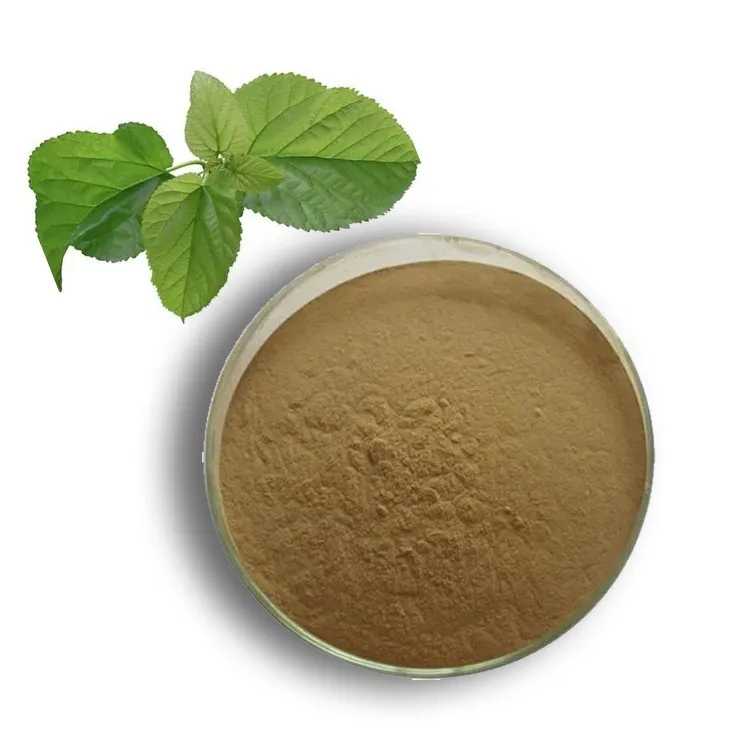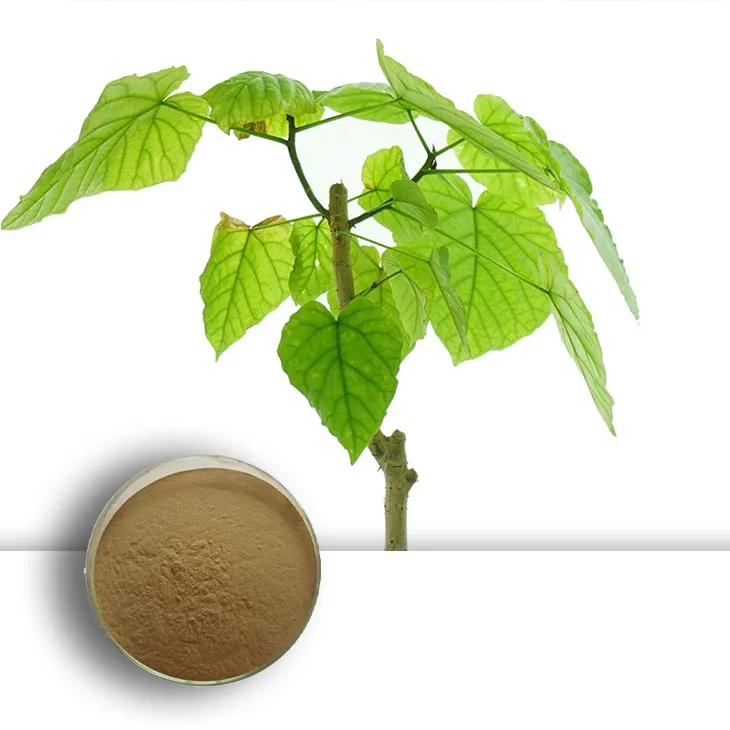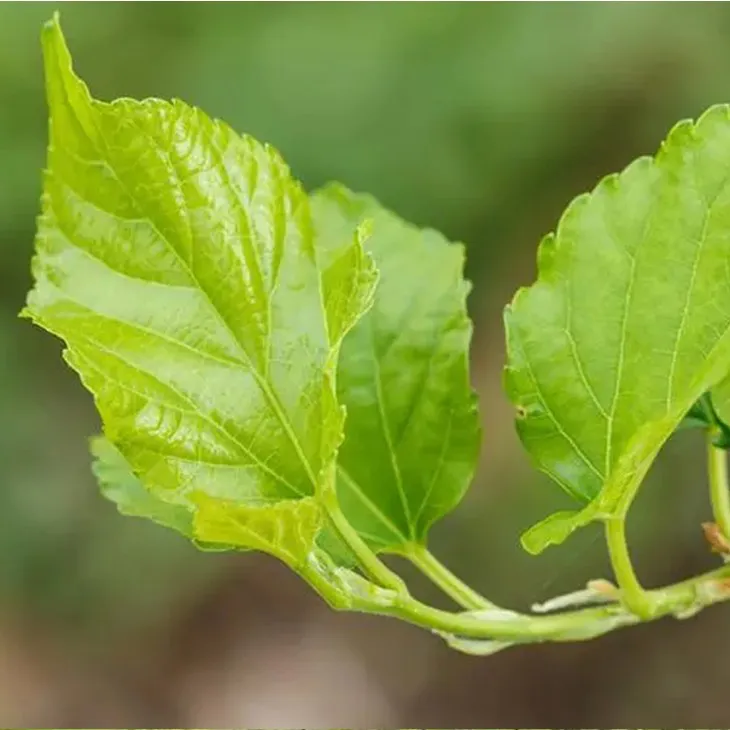- 0086-571-85302990
- sales@greenskybio.com
The process of extracting 1 - deoxynojirimycin from mulberry leaf extract.
2024-11-28

1. Introduction
1 - Deoxynojirimycin (DNJ) is a natural bioactive compound with significant pharmacological properties. It has been found to have potential in treating diabetes, obesity, and other metabolic disorders. Mulberry leaves are a rich source of DNJ. Extracting DNJ from Mulberry leaf Extract is a complex but important process that has attracted much attention in the fields of medicine and natural product research.

2. Preparation of Mulberry leaf Extract
2.1. Raw Material Selection
The quality of mulberry leaves is crucial for the extraction of DNJ. High - quality mulberry leaves should be selected, free from diseases, pests, and excessive pesticide residues. Usually, fresh and young mulberry leaves are preferred as they may contain a higher content of DNJ.2.2. Initial Extraction
- There are several methods for the initial extraction of Mulberry leaf Extract. One common method is solvent extraction.
- Ethanol is often used as a solvent. The mulberry leaves are crushed into a fine powder and then soaked in ethanol solution at a certain ratio. For example, a ratio of 1:10 (mulberry leaf powder: ethanol solution) can be used.
- The soaking time also affects the extraction efficiency. It is usually soaked for 24 - 48 hours at room temperature or with gentle agitation to ensure sufficient contact between the solvent and the mulberry leaf components.
- After soaking, the mixture is filtered to obtain the initial mulberry leaf extract. This extract contains not only DNJ but also many other components such as polysaccharides, flavonoids, and proteins.

3. Filtration and Concentration
3.1. Filtration
- The initial extract obtained from the previous step needs to be filtered to remove solid impurities. Filter paper or a membrane filter can be used for this purpose.
- Filter paper with different pore sizes can be selected according to the size of the impurities. For example, if there are relatively large particles, a filter paper with a larger pore size can be used first for rough filtration, and then a membrane filter with a smaller pore size can be used for fine filtration.
3.2. Concentration
- After filtration, the filtrate is usually very dilute, and concentration is required to increase the content of DNJ. Evaporation under reduced pressure is a commonly used method for concentration.
- The temperature and pressure during evaporation need to be carefully controlled. A lower temperature can be set to avoid the decomposition of DNJ and other active components. For example, the temperature can be set at around 40 - 50°C, and the pressure can be reduced to around 0.1 - 0.2 MPa.
- As the solvent evaporates, the volume of the extract gradually decreases, and the concentration of DNJ and other components increases.

4. Separation and Purification of 1 - Deoxynojirimycin
4.1. High - Performance Liquid Chromatography (HPLC)
- HPLC is a powerful technique for the separation and purification of DNJ. It can accurately separate DNJ from other components in the concentrated mulberry leaf extract.
- The selection of the HPLC column is very important. A column with appropriate stationary phase and particle size should be chosen. For example, a C18 column is often used in the separation of DNJ.
- The mobile phase also needs to be carefully optimized. A mixture of solvents such as methanol and water can be used as the mobile phase, and the ratio of the two solvents can be adjusted according to the separation requirements. For example, a ratio of methanol: water = 70:30 may be suitable for the separation of DNJ.
- The flow rate of the mobile phase, the injection volume of the sample, and the detection wavelength also affect the separation and detection results. For DNJ, the detection wavelength can be set at around 254 nm.
4.2. Other Separation Methods
- In addition to HPLC, there are other separation methods that can be used in combination or as alternatives. Ion - exchange chromatography is one of them.
- Ion - exchange chromatography is based on the difference in the charge properties of DNJ and other components. DNJ may have a certain charge under specific pH conditions, and it can be selectively adsorbed on the ion - exchange resin and then eluted with an appropriate eluent.
- Gel filtration chromatography can also be used. This method separates components according to their molecular size. DNJ with a relatively small molecular size can be separated from larger molecules such as polysaccharides and proteins in the mulberry leaf extract.
5. Detection and Quantification of 1 - Deoxynojirimycin
5.1. Detection Methods
- As mentioned before, HPLC can be used for the detection of DNJ. The UV detector in HPLC can detect the characteristic absorption peak of DNJ at a specific wavelength.
- Mass spectrometry (MS) can also be used for the detection of DNJ. MS can provide more detailed information about the molecular weight and structure of DNJ. It can be combined with HPLC in the form of HPLC - MS for more accurate detection and identification.
5.2. Quantification
- For the quantification of DNJ, a calibration curve needs to be established. Standard DNJ samples with known concentrations are used to prepare a series of solutions with different concentrations.
- These standard solutions are injected into the HPLC or other detection instruments, and the peak area or intensity corresponding to the DNJ is measured. A calibration curve is then plotted with the concentration of the standard solutions as the x - axis and the peak area or intensity as the y - axis.
- The sample containing DNJ is then analyzed under the same conditions, and the concentration of DNJ in the sample can be calculated according to the calibration curve.
6. Optimization of the Extraction Process
6.1. Parameter Optimization
- To improve the yield and purity of DNJ, various parameters in the extraction process need to be optimized. For example, in the solvent extraction step, the type of solvent, the ratio of solvent to mulberry leaf powder, and the extraction time can be optimized.
- In the HPLC separation step, the parameters of the column, mobile phase, flow rate, and detection wavelength can be further optimized through experimental design methods such as orthogonal design or response surface methodology.
6.2. Process Integration
- Integrating different extraction and separation steps can also improve the overall efficiency of the process. For example, the filtration and concentration steps can be integrated into a single device to reduce the processing time and loss of DNJ.
- Combining different separation methods in a proper order can also enhance the purification effect. For example, ion - exchange chromatography can be used before HPLC to remove some interfering components with different charge properties in advance.
7. Conclusion
The extraction of 1 - deoxynojirimycin from mulberry leaf extract is a multi - step process that involves raw material preparation, initial extraction, filtration, concentration, separation, purification, detection, and quantification. Each step is crucial for obtaining high - yield and high - purity DNJ. With the continuous development of extraction and separation techniques, the process is expected to be further optimized to meet the increasing demand for DNJ in the fields of medicine and health.
FAQ:
What is the importance of 1 - deoxynojirimycin?
1 - Deoxynojirimycin has several important properties. It has potential applications in the fields of medicine, particularly in relation to diabetes treatment as it can inhibit certain enzymes related to carbohydrate metabolism. It also has significance in the study of glycobiology and may offer potential in the development of new drugs.
Why is mulberry leaf extract used as the source for 1 - deoxynojirimycin?
Mulberry leaves are a natural source that contains 1 - deoxynojirimycin. Using mulberry leaf extract is advantageous as it is a renewable and relatively accessible source. The plant naturally synthesizes this compound, making it a convenient starting material for extraction.
What are the initial extraction procedures for mulberry leaf extract?
The initial extraction of mulberry leaf extract often involves techniques such as solvent extraction. Commonly used solvents include water, ethanol or a mixture of both. This helps to dissolve the compounds present in the mulberry leaves, including 1 - deoxynojirimycin, and separate them from the solid plant material.
How does filtration play a role in the extraction of 1 - deoxynojirimycin?
Filtration is an important step after the initial extraction. It helps to remove solid impurities such as plant debris, cell fragments and undissolved substances from the extract. This results in a cleaner extract which is more suitable for further processing steps towards the extraction of 1 - deoxynojirimycin.
What are the benefits of using high - performance liquid chromatography in the extraction process?
High - performance liquid chromatography (HPLC) is a highly effective separation technique. In the extraction of 1 - deoxynojirimycin, it can accurately separate 1 - deoxynojirimycin from other components in the mulberry leaf extract. It offers high resolution, enabling the isolation of pure 1 - deoxynojirimycin with a high degree of precision, which is crucial for obtaining a high - quality final product.
Related literature
- Isolation and Characterization of 1 - Deoxynojirimycin from Mulberry Leaves"
- "Optimization of 1 - Deoxynojirimycin Extraction from Mulberry Leaf Extract: A Review"
- "The Role of 1 - Deoxynojirimycin from Mulberry Leaves in Health and Disease"
- ▶ Hesperidin
- ▶ citrus bioflavonoids
- ▶ plant extract
- ▶ lycopene
- ▶ Diosmin
- ▶ Grape seed extract
- ▶ Sea buckthorn Juice Powder
- ▶ Beetroot powder
- ▶ Hops Extract
- ▶ Artichoke Extract
- ▶ Reishi mushroom extract
- ▶ Astaxanthin
- ▶ Green Tea Extract
- ▶ Curcumin Extract
- ▶ Horse Chestnut Extract
- ▶ Other Problems
- ▶ Boswellia Serrata Extract
- ▶ Resveratrol Extract
- ▶ Marigold Extract
- ▶ Grape Leaf Extract
- ▶ blog3
- ▶ blog4
- ▶ blog5
-
The best lemon juice powder in nature.
2024-11-28
-
Organic Vitamin K2 Powder Suppliers
2024-11-28
-
Bulk purchase of L - tyrosine.
2024-11-28
-
Vitamin K2 Manufacturers
2024-11-28
-
100% Pure Natural Rutin.
2024-11-28
-
Chinese Citrus Bioflavonoid Suppliers.
2024-11-28
-
Elderberry Extract
2024-11-28
-
Echinacea Extract
2024-11-28
-
Senna Leaf Extract
2024-11-28
-
White Peony Extract
2024-11-28
-
Pine bark Extract Powder
2024-11-28
-
Cranberry Extract
2024-11-28
-
Buckthorn bark extract
2024-11-28
-
Hawthorn powder
2024-11-28
-
Natural grape seed extract
2024-11-28
-
Milk Thistle Extract
2024-11-28





















